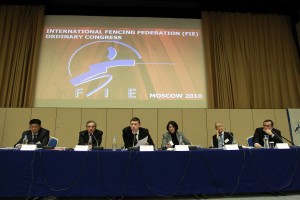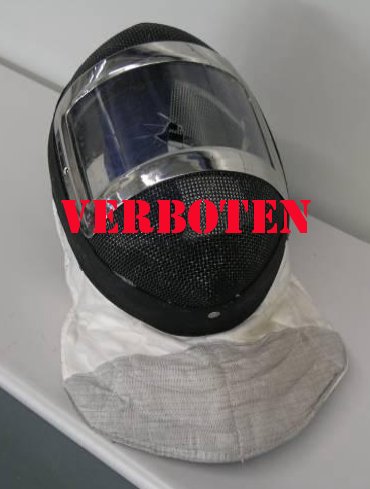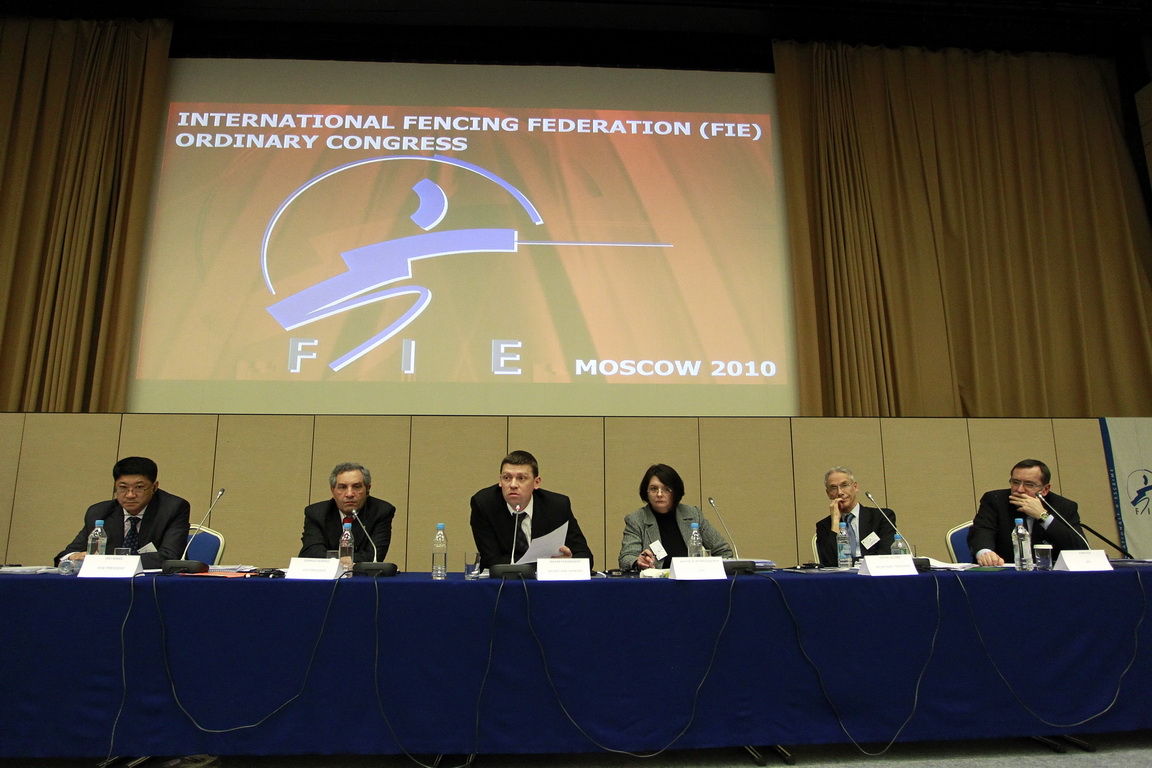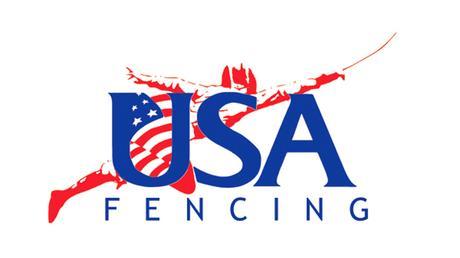
The FIE Congress met in December, 2010 and passed several rules changes. Among the changes are the removal of the Visor masks in sabre as a requirement. There are also changes to the way that non-combativity (formerly passvity) will be called on the FIE level. The FIE is the International Fencing Federation and is responsible for the rules of international fencing competitions.
Visor masks not required:
The FIE had pushed through a requirement for the Lexan masks for all three weapons as a way to make fencing more telegenic. Many fencers in foil and epee resisted the change, citing concerns for safety. Following an accident at the 2009 European Junior Championships in November of 2009, the FIE made the masks optional for foil. After studies were conducted on the safety of the masks as currently manufactured, the FIE revised their ruling and banned the visor masks for foil and epee.

Given that the masks are not in use for two of the three weapon disciplines, a vote was held on removing the requirement for this mask from sabre competition. That motion passed, so now the visor masks are no longer a requirement for electric sabre. Many fencers will still use the masks that they have, at least until the supply of new Lexan shields is discontinued by the manufacturers.
Changes to non-combativity
Changes also went into effect for the call of non-combativity. As cited by Jeff Bukantz in the Winter issue of American Fencing, the pre-2011 non-combativity rules could (and were) used by the trailing fencer to gain advantages on the fencer that had the lead. Under those rules, when non-combativity was called both fencers received a yellow card. If one fencer already had a yellow card, then they received a red card which awards a point to the opponent.
Seth Kelsey fell victim to this rule facing Boisse (FRA) in international competition. Already under a yellow card penalty, Kelsey let up when Boisse relaxed towards the end of a period and the referee called non-combativity. The penalty point tied up the match and Boisse went on to win the bout.
Under the new rules (in effect as of January 1, 2011) there are no longer penalties assessed for non-combativity; the match is simply shortened to remove the 1 minute break between fencing periods.
The new rule is as follows:
If one of the two criteria below is present, there is unwillingness to fight:
1. criterion of time : approximately one minute of fencing without a hit
2. absence of blade contact or excessive distance (greater than the distance of a
step-forward-lunge) during at least 15 seconds.
In the event of non-combativity:
For individual (Direct Elimination) bouts:
a) If during the two first periods of a direct elimination bout both fencers make clear
their unwillingness to fight, the Referee will proceed to the next period, without the minute rest.b) When both fencers make clear their unwillingness to fight during the third period
of a direct elimination bout, the Referee will proceed to a last minute of fencing.
This last minute, which will be fenced in its entirety, will be decisive and will be
preceded by a drawing of lots to decide the winner should the scores be equal at the
end of the minute.
What does this mean?
If non-combativity is called, then the current period is over and the bout moves to the next period without the minute break. If it is called during the 3rd period, then the extra minute is fenced in it’s entirety.
The question will be: will a fencer who is behind in the 3rd period with just under a minute to go be able to trigger a non-combativity call (15 seconds out of distance/no blade contact) to get the full overtime minute of fencing?
In team events:
a) If both teams make clear their unwillingness to fight during a team match, the
Referee will proceed to the next bout.b) If both teams make clear their unwillingness to fight during the last bout, the
Referee will proceed to a last minute of fencing. This last minute, which will be
fenced in its entirety, will be decisive and will be preceded by a drawing of lots to
decide the winner should the scores be equal at the end of the minute.
What does this mean?
If the two fencers are called for non-combativity, then their bout ends and it goes to the next bout. If this occurs in the 9th (final) bout, then the overtime minute is called.
We’ll have to observe how and when this is called at the first few FIE events in 2011 to learn how referees are told to enforce this rule in foil and epee.
Other changes
International Calendar
- 2013 Senior World Championships: Budapest
- 2012 Cadet and Junior World Championships: Moscow
- 2011 Masters (veterans) championships: Morocco
- 2011 FIE Congress: Philadelphia
Other decisions
- Rules concerning video arbitrage including not direct interference by members of the international arbitrage commission (sic)
- Voted in favor the introduction of a sparring bout in case of priority to assign the sixteenth place in individual competitions. (This is to place the fencers from pools directly to the table of 32 for the DE portion of an individual event.)
- Approval of the new “cahier des charges” of the organization of the Masters (veterans) World Championships.
- Change in the rules governing the election to the FIE athletes commission (not specified)
- Adoption of electronic voting also during the proceedings of the Congress elective sessions.
- Approved the 2009-10 financial report and the 2010-11 budget (not published yet).
Reference Links:





1 Comment
Comments are closed.